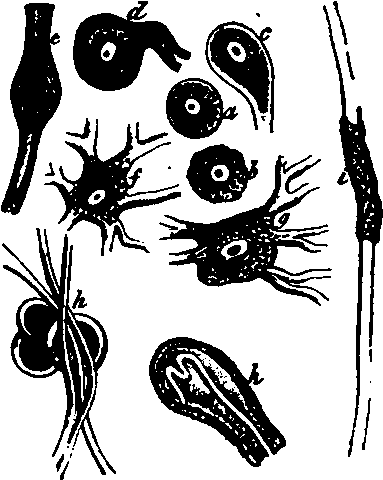Nervous Tissue
Description
This section is from the book "Wonders Of The Human Body", by Auguste Le Pileur. Also available from Amazon: Wonders of the Human Body.
Nervous Tissue
Nervous Tissue is essentially formed of tubes, which are large and small. They have homogeneous, thin, transparent walls, and contain a viscous, fatty fluid, which is the medullary substance or the white substance of Schwann, in which there is a sort of stem—the axis-cylinder. In the spinal marrow and in the brain the walls of the tube are wanting, and only the medullary substance and the axis-cylinder remain. As we approach the outside of the body we find, on the contrary, that the tubes become more homogeneous in structure, until at their extremity they are reduced to a filament in which the walls, the cylindrical axis, and medullary substance are not distinguishable. At certain points of the nervous system the tubes differ anatomically, according as they belong to the nerves of sensation or the nerves of motion.

Fig. 6. Nervous tissue seen under the microscope.
a b, Spherical nerve-cells.
c, Bi-polar cell, fg, Multi-polar cells.
h, Cells of the ganglia and nerve-fibres.
i. Nerve-tube and axis-cylinder.
k, Termination of a nerve-fibre in an organ.
Other elements also are found in the nervous tissue—the ganglionic cells or corpuscles, and the fibres of Remak.
Continue to:
